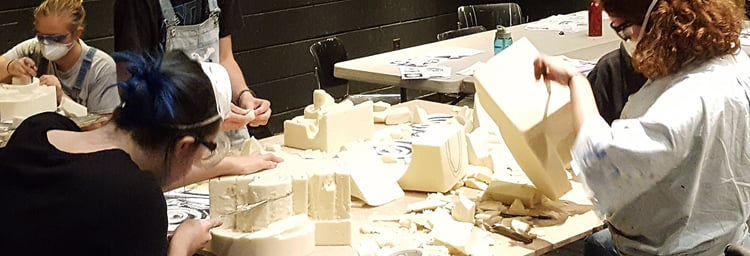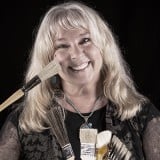Heidi Hoffer is a designer and instructor currently working at SCAD as Professor of Production Design, which includes a focus on scenic design for theatre, film/TV and themed entertainment. She also provides inspiring lectures and workshops to students and the design community all around the world. Recently, she provided a hands-on seminar for the University of Western Michigan’s Design and Technology Department aimed at teaching Professor Dave Nofsinger and his B.F.A. students foam carving techniques. The workshop focused on creating 3D Ionic Capital props and included a section on how to properly prime and seal foam with products like Rosco FoamCoat and CrystalGel.
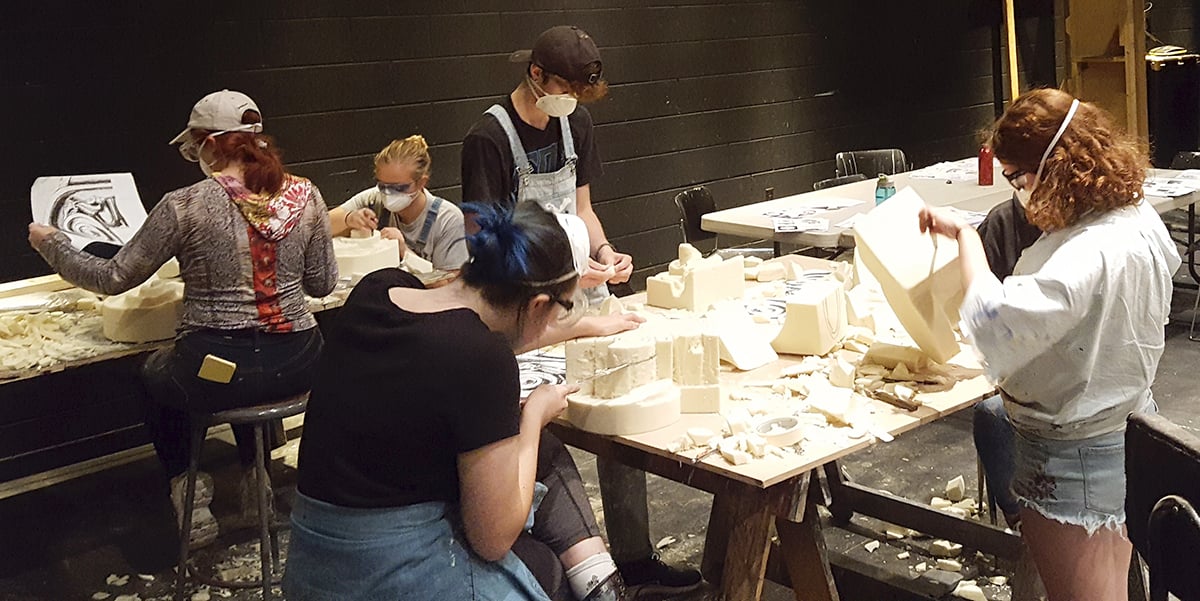 After exploring important topics such as material safety data sheets and personal protection equipment, the students eagerly put their knowledge into action. The first step was to place a drawing of an Ionic Capital onto a rigid piece of foam block, then gently perforate the basic outline of the pattern into the foam, which made it easier to cut the shape on a band saw.
After exploring important topics such as material safety data sheets and personal protection equipment, the students eagerly put their knowledge into action. The first step was to place a drawing of an Ionic Capital onto a rigid piece of foam block, then gently perforate the basic outline of the pattern into the foam, which made it easier to cut the shape on a band saw.
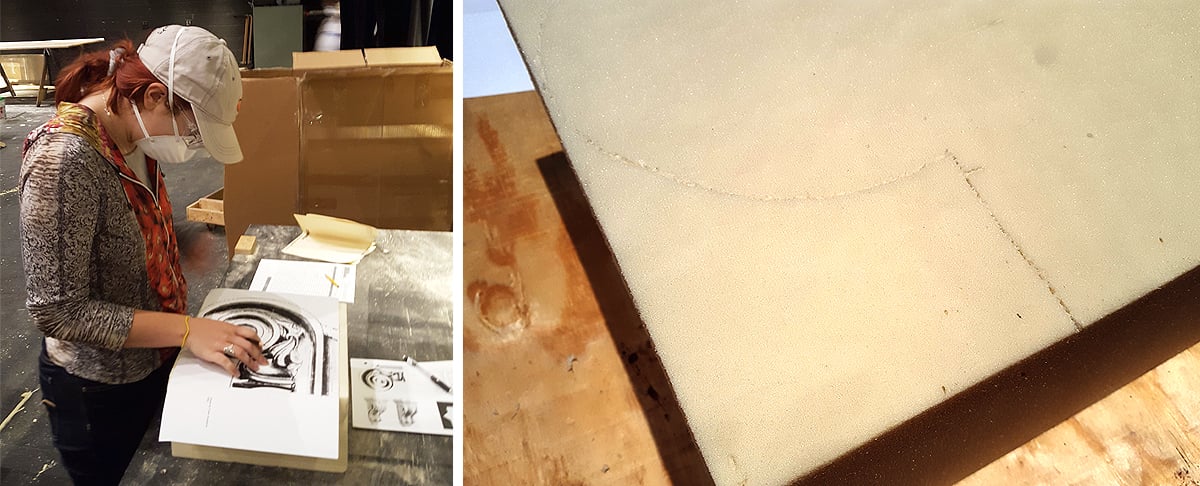 The next procedure was to prepare the block for carving by connecting the pounce dots with pencils, then lightly scoring the top of the foam with a sharp blade. Using readily available items such as steak knives, butter knives and spoons, as well as standard shop tools like sandpaper and files, the students etched and carved details into the foam.
The next procedure was to prepare the block for carving by connecting the pounce dots with pencils, then lightly scoring the top of the foam with a sharp blade. Using readily available items such as steak knives, butter knives and spoons, as well as standard shop tools like sandpaper and files, the students etched and carved details into the foam.
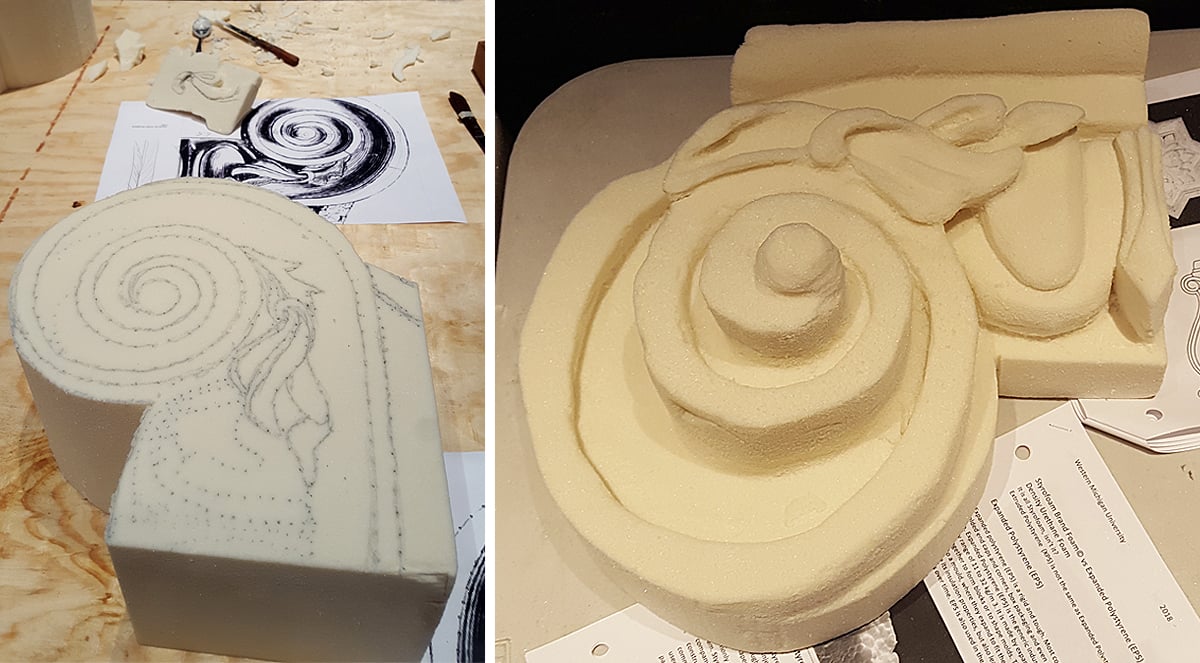 Their foam carving was now ready for priming and fine-tuning. To ensure the best results, the students tested different scenic materials and techniques on their off-cuts before applying them to the carved sample. While examining the properties of Rosco FoamCoat and CrystalGel, they learned how to gauge depth and they also attached a foam acanthus leaf to their foam prop.
Their foam carving was now ready for priming and fine-tuning. To ensure the best results, the students tested different scenic materials and techniques on their off-cuts before applying them to the carved sample. While examining the properties of Rosco FoamCoat and CrystalGel, they learned how to gauge depth and they also attached a foam acanthus leaf to their foam prop.
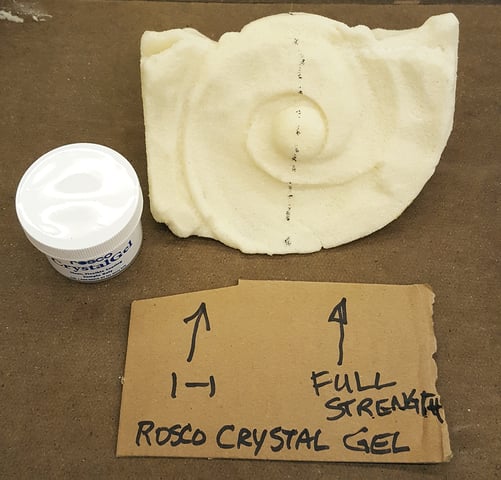 The students discovered that when they used CrystalGel as a primer/sealer, both at full strength and diluted 1:1 with water, it created a fine dent-able surface that resisted sanding. They were also excited to explore CrystalGel’s excellent binding properties, which the students found particularly useful for attaching their delicate foam acanthus leaf.
The students discovered that when they used CrystalGel as a primer/sealer, both at full strength and diluted 1:1 with water, it created a fine dent-able surface that resisted sanding. They were also excited to explore CrystalGel’s excellent binding properties, which the students found particularly useful for attaching their delicate foam acanthus leaf.
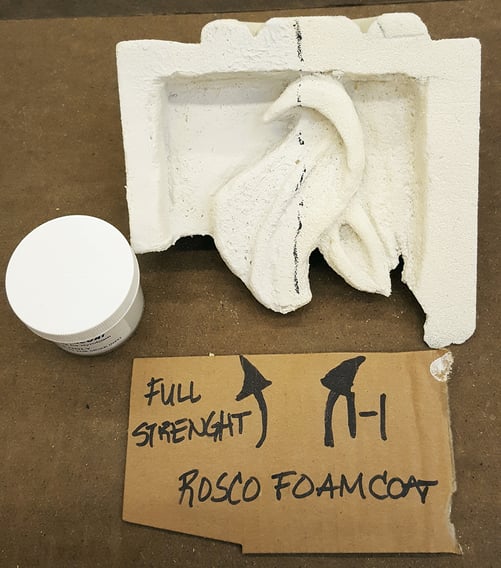 Testing Rosco FoamCoat as a primer/sealer – both at full strength and diluted 1:1 with water – also yielded interesting results. The students found out that while both variants created a fine even surface, the undiluted FoamCoat also added structure to the surface that could be sanded.
Testing Rosco FoamCoat as a primer/sealer – both at full strength and diluted 1:1 with water – also yielded interesting results. The students found out that while both variants created a fine even surface, the undiluted FoamCoat also added structure to the surface that could be sanded.
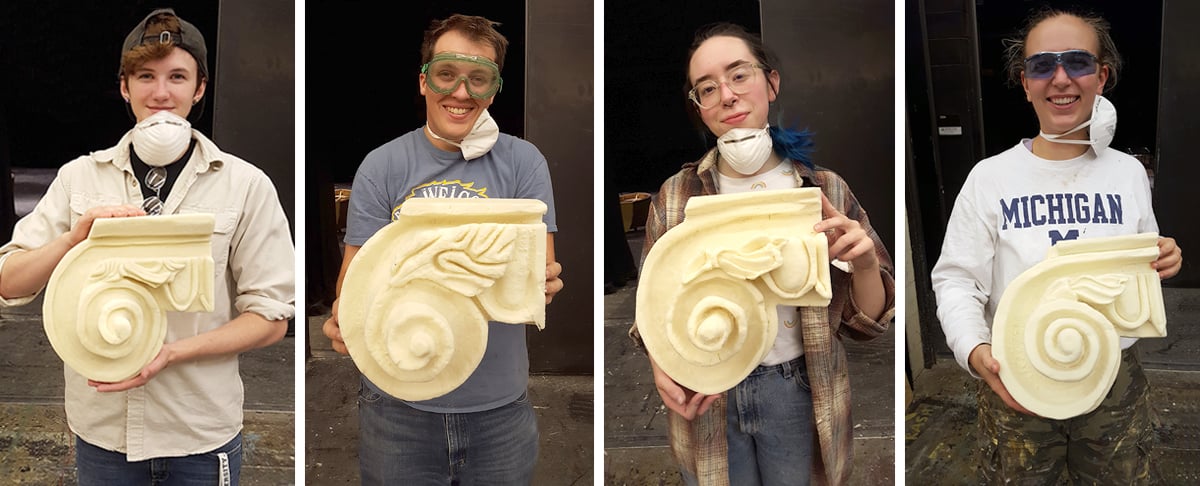 Leveraging their new knowledge and skills, the students successfully turned their carved samples into Ionic Capital props. Heidi was glad to note that “the students’ final swipes of sculpting tools were confident and determined as they built the volute and acanthus leaves of their Ionic Capitals with Rosco FoamCoat and CrystalGel – which performed predictably and admirably.”
Leveraging their new knowledge and skills, the students successfully turned their carved samples into Ionic Capital props. Heidi was glad to note that “the students’ final swipes of sculpting tools were confident and determined as they built the volute and acanthus leaves of their Ionic Capitals with Rosco FoamCoat and CrystalGel – which performed predictably and admirably.”
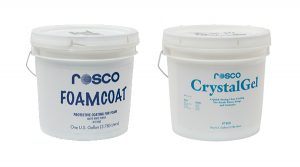 To learn more about Heidi Hoffer’s widely diverse design work in film and theatre, visit her website: hofferdesign.weebly.com. If you’d like more information about the products Heidi used in her foam carving workshop, please explore the FoamCoat and CrystalGel product pages on the Rosco website.
To learn more about Heidi Hoffer’s widely diverse design work in film and theatre, visit her website: hofferdesign.weebly.com. If you’d like more information about the products Heidi used in her foam carving workshop, please explore the FoamCoat and CrystalGel product pages on the Rosco website.

